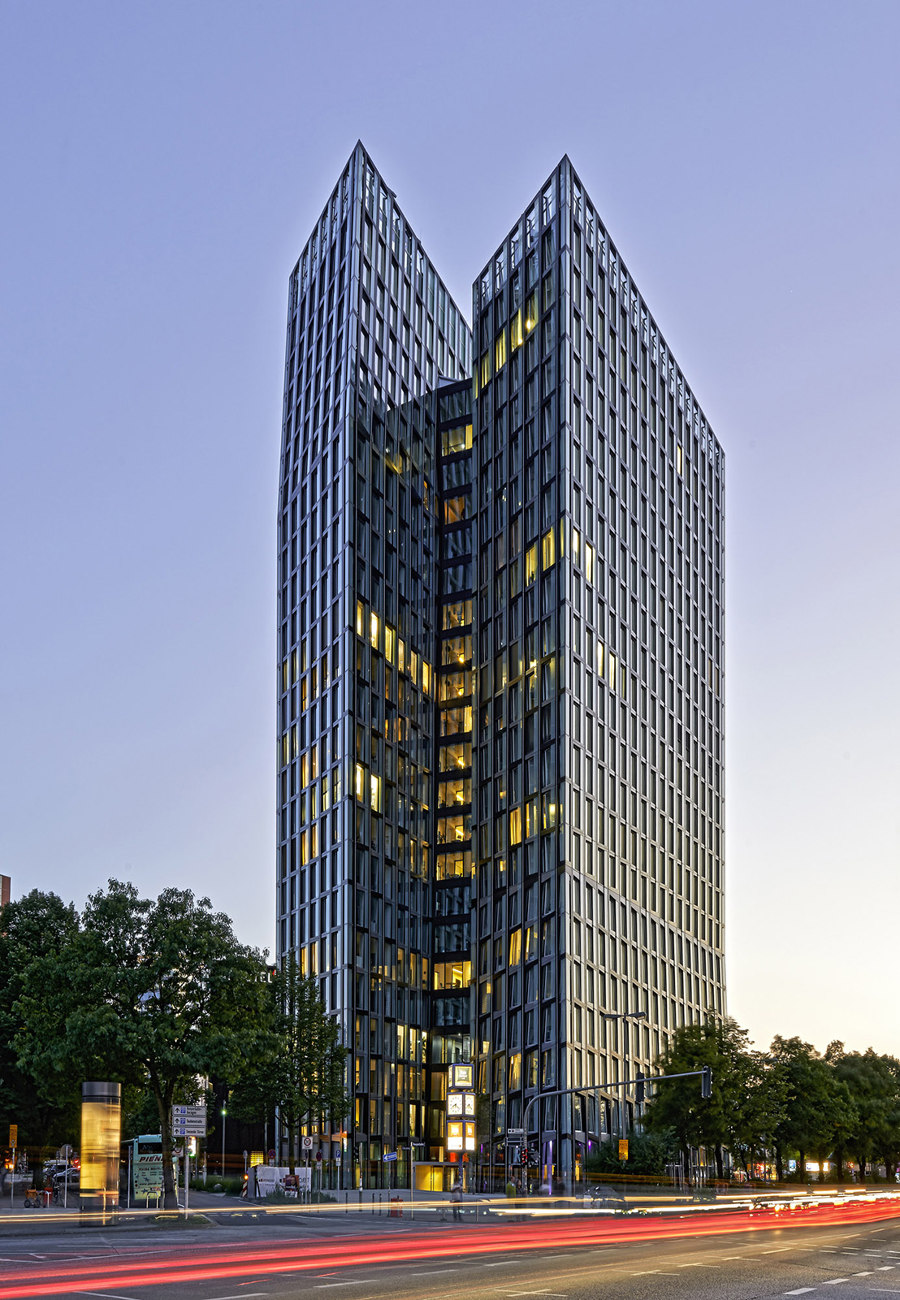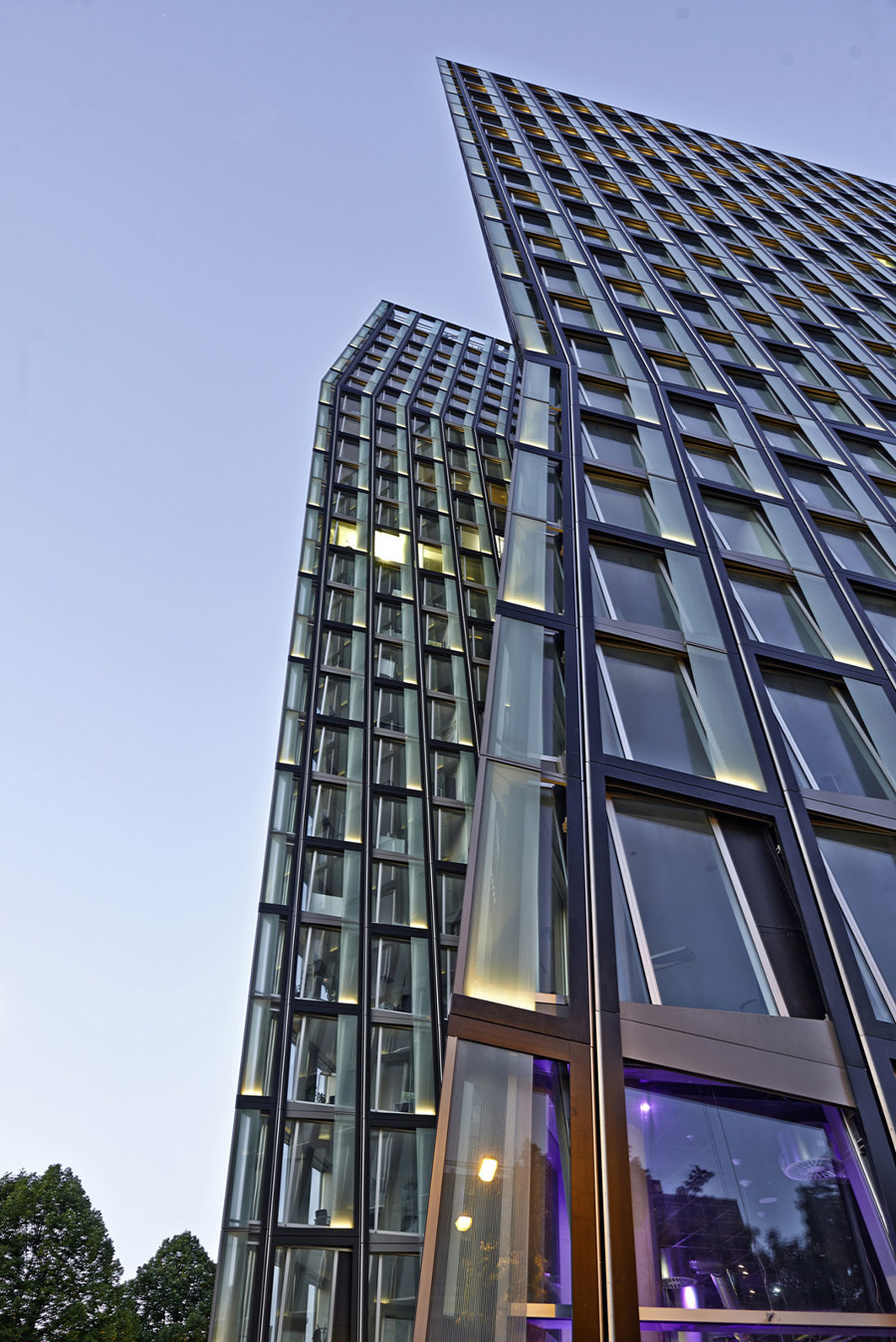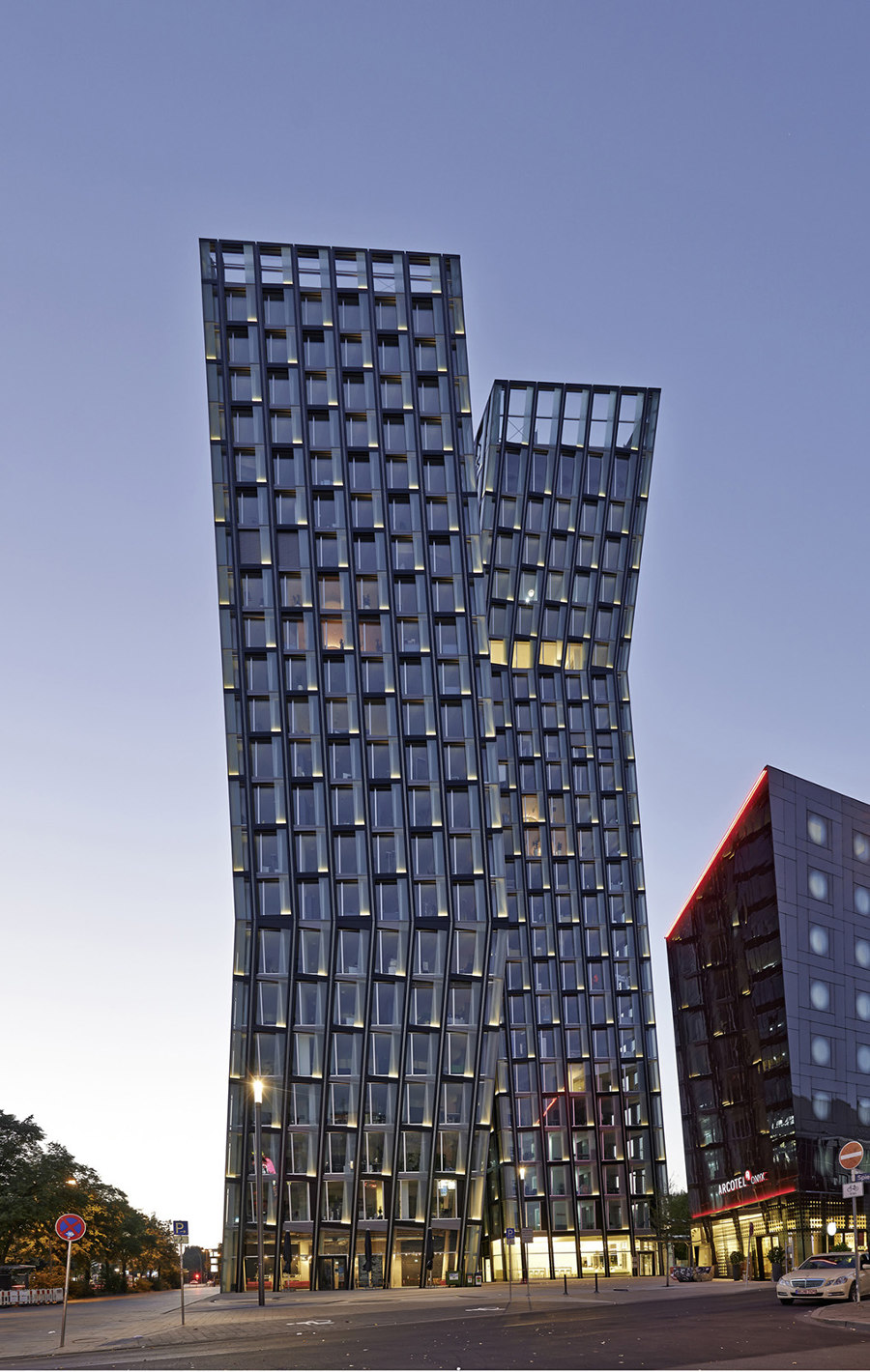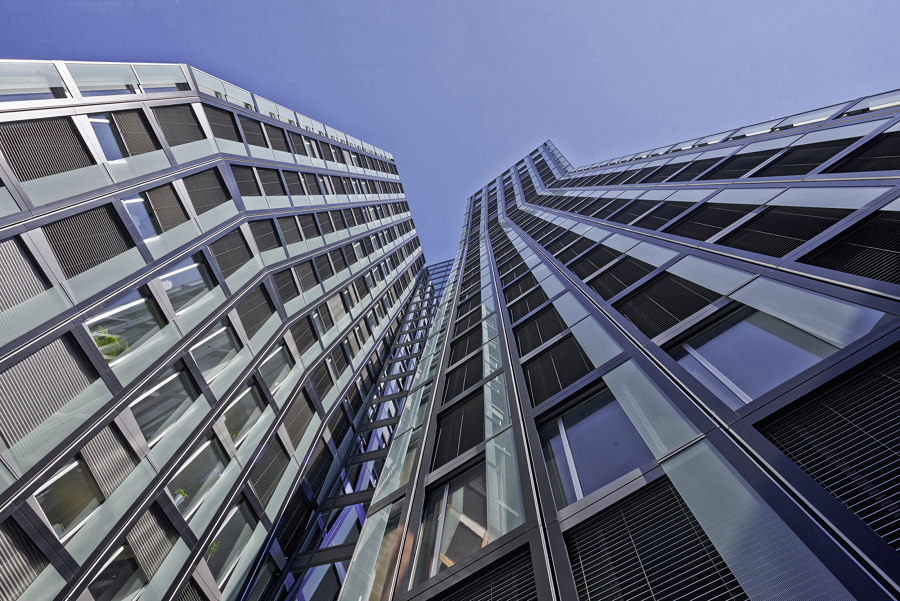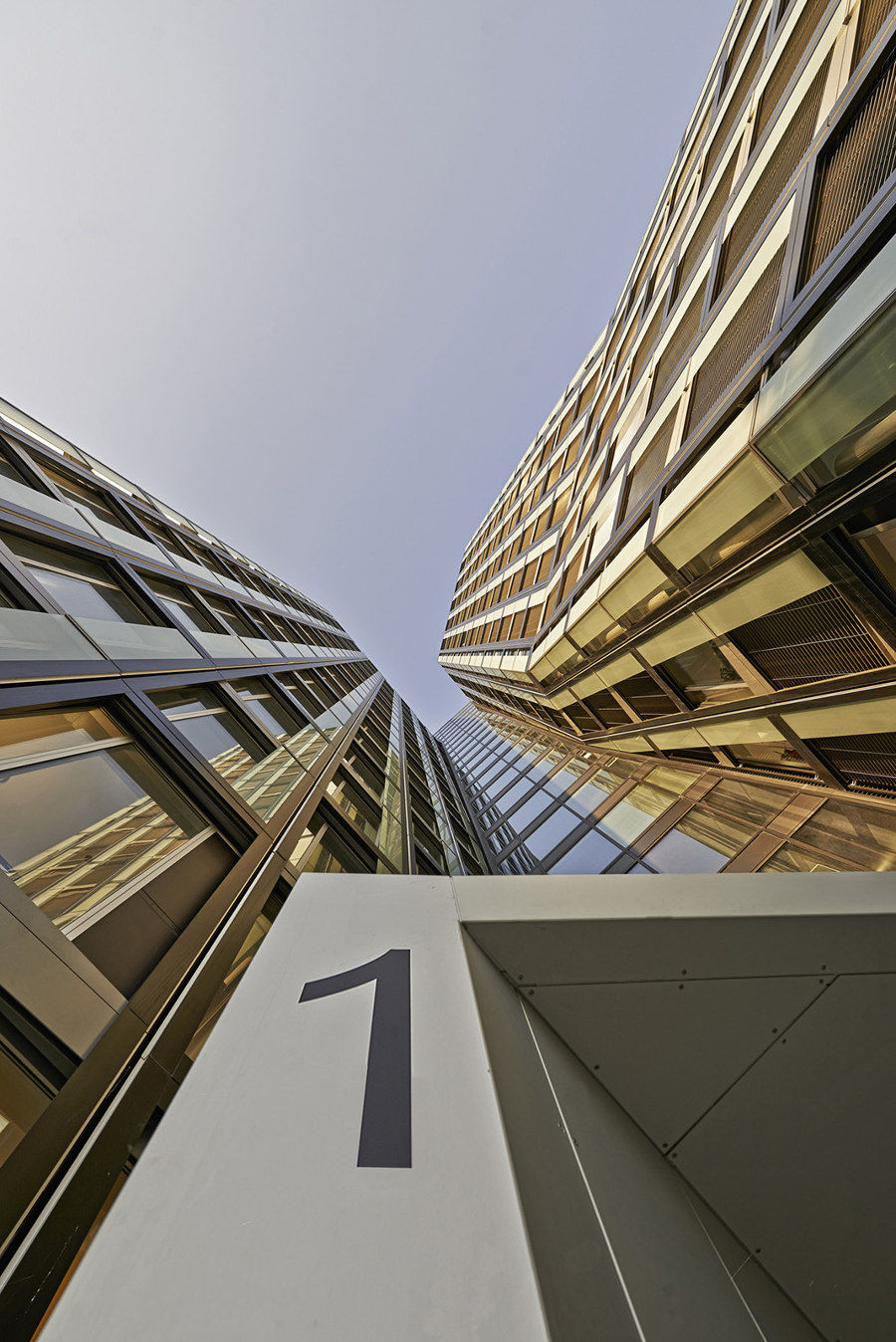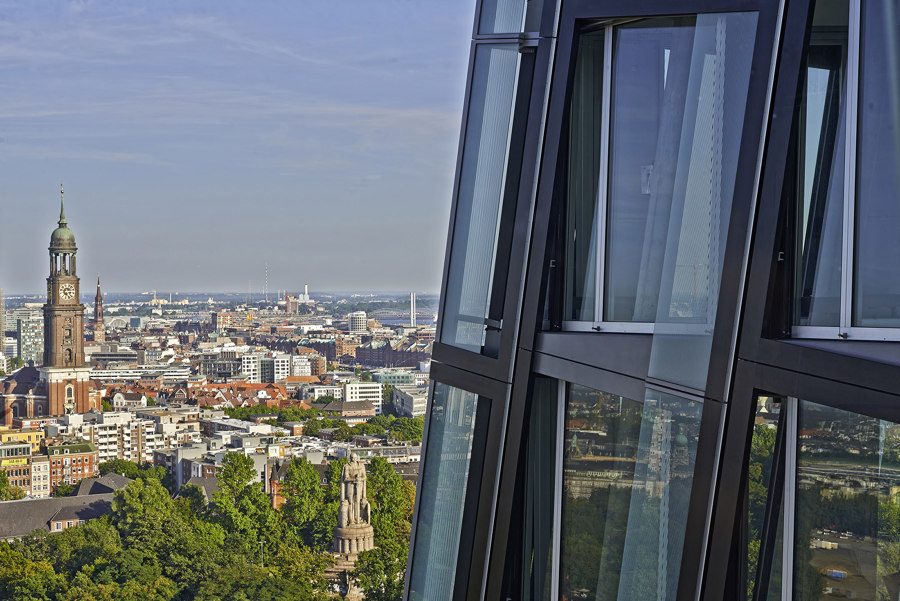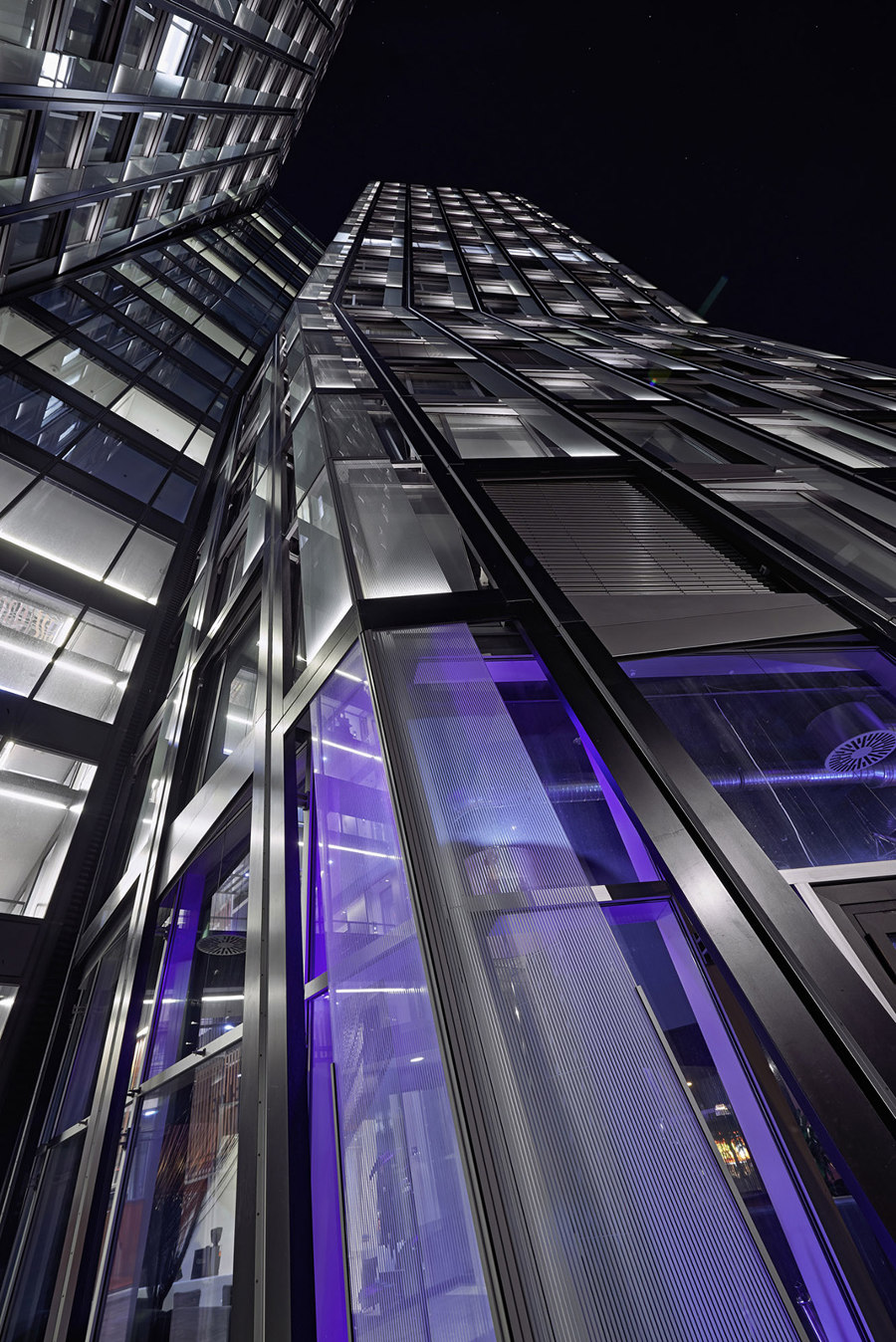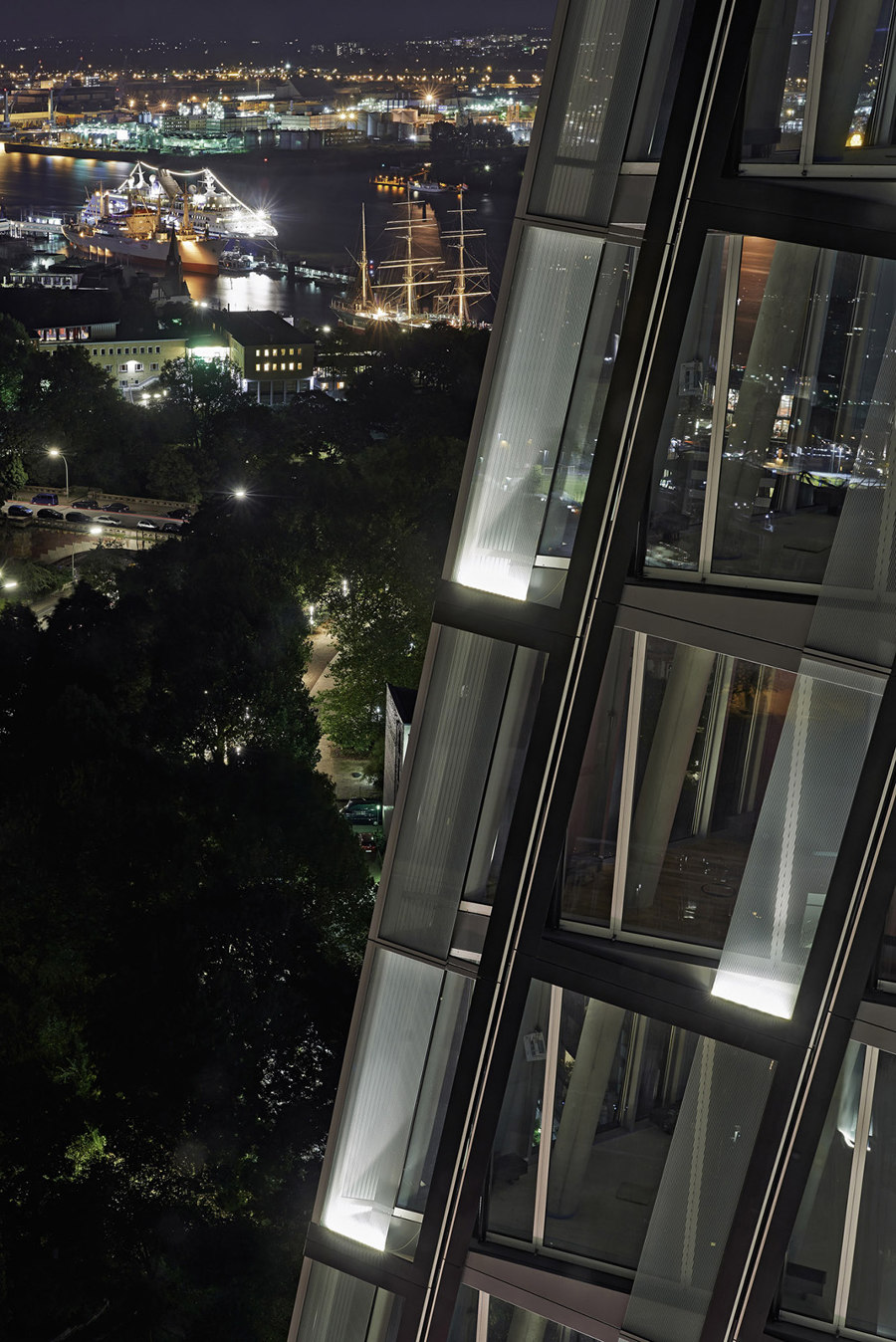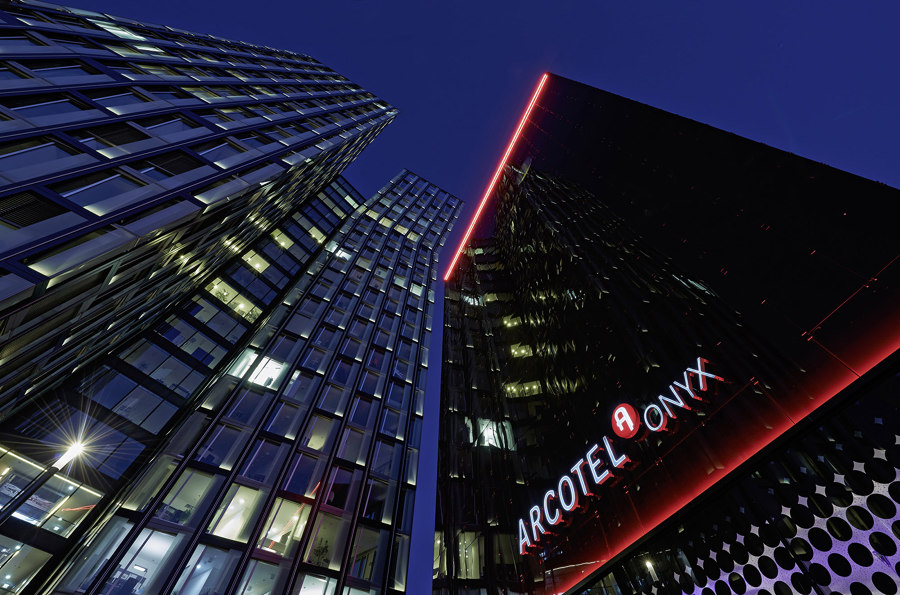The “Tanzende Türme”, or ‘dancing towers’, rise on the interface that joins Hamburg’s inner city with Sankt Pauli, a borough formerly outside the city that historically evolved to become a part of town. As the portal to the present districts of St. Pauli, Altona and parts of the port, the towers mark the gateway to Hamburg’s world-famous Reeperbahn, a boulevard for amusements of all kinds. The guiding idea for the design is the formation of an expressive building structure that does justice to the site’s heterogeneous context and its transregional significance. It sets the concluding accent on the extensive changes in building structures occurring in recent years within this quarter. In terms of shape, the configuration of this pair of high-rises takes its ‘posture’ from the vitality associated with their location. Appearing to dance, they are the physical expression of the joy associated with movement and unfold their power as an identity-endowing ‘diamond solitaire’ in urban planning and development.
Façade
The dancing couple slants up to three metres away from the vertical axis. Though the floor plans shift thereby, they still remain congruent. The towers’ Gartner façades gloss over the slants on a single-walled basis with the help of a two-storey sheet-metal frame which produces a double-walling solely in the superstructure and provides for window-cleaners’ safety. The façades, window technology and exterior sunscreening have to surmount 16 different slanting situations on their way to the top of the building. The ventilation element is equipped with a hurricane-proof deflection pane.
Nighttime effect & usage
When darkness falls the towers are enlivened by LED strip lights on the lower edge of the deflection panes. Apart from office operations at the STRABAG Group and at several other tenants, for instance the German subsidiary of Diageo, the world’s leading alcohol-beverage enterprise, the attractions lie in the restaurants housed in the ground-floor zone and the upmarket restaurant with “Sky Bar” and a fantastic view on the 23rd floor. However, the rendezvous that lures above all else is the Mojo Club. Following a long pause yet still quite near its previous site, most of the locale’s present home is now situated belowground. In the evenings the club is accessible via stairway entrances concealed in the building’s base that open out onto the forecourt. For visitors, a two-storey, 1,600 m² paradise of dancing and music awaits them. Due to reasons dealing with acoustics, the 9-metre-high subterranean vaulted ceiling has been freely suspended into the area housing the underground car park. As a result, the ‘dancing’ here is not just limited to the view of the façades that changes with every inquisitive step taken by passers-by, a view that can confound even more due to the unusual reflections caused by the sun and clouds. Hamburg’s Reeperbahn has received a signet that sparkles for miles around.
Design team:
Hadi Teherani
